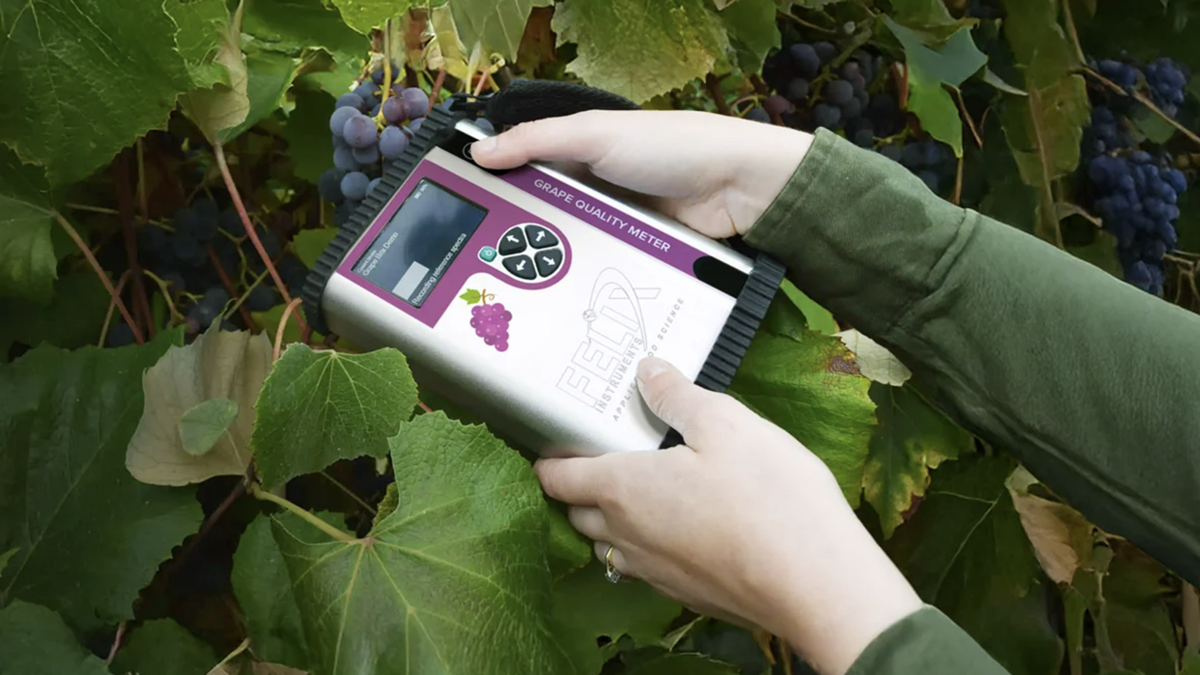Measurements
Dry matter: the key to kiwifruit
FELIX INSTRUMENTS explains us that Kiwifruit has become commercially popular world-wide in the past four decades. The growing demand makes long transport and storage times inevitable. Dry matter is a reliable parameter to control harvest time and quality for many fruits. In the case of kiwifruits, dry matter provides additional insights that have helped to shape best practices for kiwifruit cultivation and post-harvest handling. Estimating dry matter during various stages of its production has become crucial for sustaining a profitable kiwifruit industry. Dry Matter in Kiwifruit Dry matter is a measure of all the solid components in a plant, minus water content. In kiwifruit, dry matter is mainly composed of soluble solids such as sugars and insoluble solids such as starches and carbohydrates. Other compounds like proteins, pigments, etc., are also part of dry matter The kiwifruit accumulates dry matter from fruit-set well into the ripening process; it is thus associated with many stages of kiwifruit development. Therefore, the dry matter level can determine harvest time, keeping in mind consumer satisfaction.
28 July, 2021
FELIX INSTRUMENTS explains us that Kiwifruit has become commercially popular world-wide in the past four decades. The growing demand makes long transport and storage times inevitable. Dry matter is a reliable parameter to control harvest time and quality for many fruits. In the case of kiwifruits, dry matter provides additional insights that have helped to shape best practices for kiwifruit cultivation and post-harvest handling. Estimating dry matter during various stages of its production has become crucial for sustaining a profitable kiwifruit industry. Dry Matter in KiwifruitDry matter is a measure of all the solid components in a plant, minus water content. In kiwifruit, dry matter is mainly composed of soluble solids such as sugars and insoluble solids such as starches and carbohydrates. Other compounds like proteins, pigments, etc., are also part of dry matter The kiwifruit accumulates dry matter from fruit-set well into the ripening process; it is thus associated with many stages of kiwifruit development. Therefore, the dry matter level can determine harvest time, keeping in mind consumer satisfaction. There are many other reasons for using dry matter as an indicator of maturity and quality for kiwifruit. - Soluble solids content (SSC), which can measure only sugars, is unable to account for the post-harvest conversion of starch to sugars in climacteric fruits like kiwifruit. Since dry matter at harvest includes both starch and sugars, it can be correlated with post-harvest sugars or sweetness.- Dry matter is also sensitive to growing conditions and agricultural practices and will vary with season, location, and harvest date, which provides information on the quality of orchards.- Dry matter does not change during the storage period, post-harvest. Dry matter can be used to predict the incidence of skin pitting, a disease caused by Cadophora luteo-olivacea, a fungus, during storage. Optimum Dry Matter ContentA dry matter range of 15% to 20% was earlier associated with consumer satisfaction. These standards have now been revised. The accepted standard is ~16% dry matter to get good quality fruits and ensure long and safe storage. Quality and TasteDry matter of less than ~15-16% in kiwifruit, which can result due to early harvest or growth in inferior orchards, do not often meet consumer satisfaction. Moreover, keeping in mind the final fruit quality, in kiwifruits, the desirable dry matter to predict maturity is connected with ripe titratable acidity (RTA). - A dry matter of ~16% is considered the minimum for quality kiwifruits.- If the RTA is less than 1.2%, then a dry matter of ~15% can also be acceptable.- A minimum of ~16% dry matter should accompany RTA that is equal to or more than 1.2% Often, industry organizations will also set specific guidelines for growers that must be met for fruit to be accepted. These guidelines can differ slightly between cultivars and across regions. Storage TimeIf kiwifruits have a very high level of sugars or SSC, they tend to be soft and cannot be stored long. If the sugar levels are too low, the fruits wont meet taste standards. Since dry matter at harvest is correlated with SSC after harvest, it has been established that:- For kiwifruit to have a minimum of 14% SSC after the storage period, fruits must have a minimum of 14-15% dry matter at harvest.The maximum desirable level of SSC is 16%.- To ensure that kiwifruits do not have more sugars, dry matter should not exceed 18.19% during harvest Preventing Postharvest DiseasesThe skin pitting disease in kiwifruits reduces storage time and can destroy substantial portions of the harvest. There are many factors which influence the occurrence of skin pitting during storage, such as time to achieve the right controlled atmospheres (CA), i.e., levels of oxygen and carbon dioxide. However, when CA conditions are ideal, low dry matter and high nitrogen content in fruits make them susceptible to the fungus. A higher dry matter level at the start of storage can reduce or prevent skin pitting. - Fruits with dry matter of 10.55% to 13.66% are likely to suffer heavily from skin pitting.- Fruits with a minimum of 15.38% of dry matter are more hardy against the fungal attack.



.jpg)







